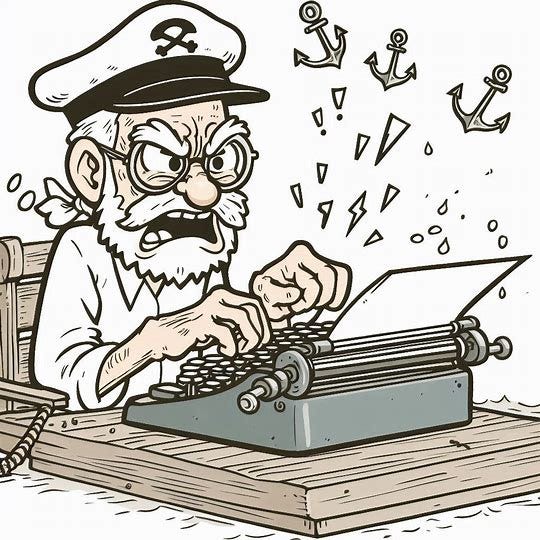Recently I had to do some light editing of an article submission—trimming a few sentences I feared might raise reader ire. The author had ventured momentarily into a subject that, while not explicitly political, has nonetheless become a divisive topic in these fraught times. We’ve always promised readers we’ll try to make SCA an escape from partisan controversies and other hot-button real-world topics, even if a few things have slipped past us. Boat-designer Jerry Montgomery once listed the three biggies: “politics, religion, and raising children.” Jerry noted he was, coincidentally, particularly qualified to speak to all of these subjects—especially, he said, on how best to raise other people’s children.
We’ve also asked readers to please ignore the occasional comment they find exasperating or offensive, as opposed to starting WWIII in the comments section. Even with our policy of avoiding contentious topics though, we’ve still managed to find turbulent waters on occasion. Based on articles we’ve published over the years we’ve been told we (or the writer, or both of us) were “ableists” “chauvinists” “reckless” and of course (to put it nicely) “exceptionally misinformed.” Jerry’s list of just three third-rail subjects now seems rather quaint.
We’ve fielded a few complaints for cover photos where the set of the sails was less than ideal. We’ve been told we’re a “Potter/Scamp/Sea Pearl rag” based on so many articles related to those boat designs. We’ve been told we include too many powerboats and also not enough. And some of you seem convinced there are no inherent differences in the relative seaworthiness of boats we contrast and compare—“It all depends who’s at the helm” you write to us. While we always concede the skipper is a key component, we assure you the boat design does matter.
Of course we’ve also offended you with things we’ve done related to the magazine— the format change, price hikes, bungled orders, missed bylines and photo credits—we’ve been guilty of all of those and understand the frustration. We’ve also taken some heat for publishing photos of kids on the water without PFDs, or for articles where sailors seem to be taking unnecessary or foolish risks. “So you’re saying you don’t think this guy will make it around the world nonstop in an 8-foot plywood boat screwed together with galvanized hardware? Can’t you see he’s growing sprouts on the tiny fordeck?”
Then there are the nautical language police of course (no offense), who write to tell us it should really be gybe or jibe, leach or leech, balance lug or balanced lug, rope or line, and so on. I mean only a fool calls a marker a buoy. Recently we got a note objecting to our use of “fly bridge”—an abbreviated version of “flying bridge.” Perhaps we need to stuff our abbreviations up in the forecastle. Actually we sort of enjoy these language critiques, as we really do aim for greater accuracy.
We’ve got a few of our own pet peeves too. We occasionally receive articles from writers who misspell half the place names of their own cruising grounds. This forces us into an extensive virtual cruise online—following the author’s wake to confirm their facts.
And there are boating-specific annoyances. We bristle at messy lines and running rigging that looks destined to tangle or snag. We hate to see fenders hanging down after a boat has cleared the docks—if for no other reason than they’ve ruined so many otherwise great photos. A friend I used to sail with called them “O-fenders” when they’re misused in this way.
How about you, dear reader, what nautical words or misuses knock you off even keel? What bad boating habits need to go by the boards? Let us know in the comments section below. Just make sure you stay away from the three biggies. •SCA•




After watching the Twin Towers collapse live on television, I made my way down to Boston Harbor, rowed out to my boat and went sailing. Logan airport was closed and the only things flying were fighter jets and birds. The sanctuary provided by my vessel was much appreciated that horrific day and the respite from the harsh realities of our human condition welcomed. I applaud your efforts to keep Small Craft Advisor a literary safe place for all to enjoy and seek refuge.
I had to chuckle at the marker versus buoy comment. I grew up in the 1950-60 's Midwest and learned to sail a Snipe on the Illinois River dodging huge tow boats.
We refered to all of the navigation aids as channel markers. Ones that floated were called buoys as they were chained to the bottom. The ones that didn't float were called beacons as they were fixed to something permanent but to us they were all markers.
We usually referred to the green flat top buoys as cans and the pointed Red top buoys as nuns. I think that is also what they are called in the USCG navigation guide The design helps you distinguish them at night if you can't tell their color.
That being said you can call him what you want as long as you know which side of them to go on!